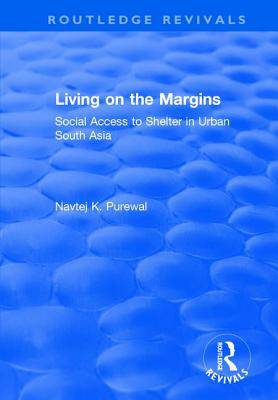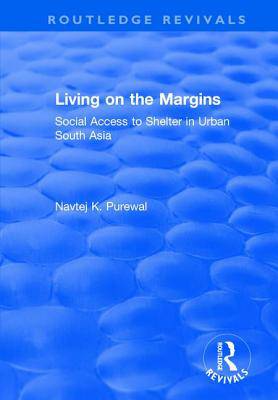
- Afhalen na 1 uur in een winkel met voorraad
- Gratis thuislevering in België vanaf € 30
- Ruim aanbod met 7 miljoen producten
- Afhalen na 1 uur in een winkel met voorraad
- Gratis thuislevering in België vanaf € 30
- Ruim aanbod met 7 miljoen producten
Zoeken
Living on the Margins: Social Access to Shelter in Urban South Asia
Navtej K Purewal
€ 175,95
+ 351 punten
Uitvoering
Omschrijving
This title was first published in 2000. The privatization of former social state housing through recent public-private partnerships is becoming increasingly prevalent in Third World as well as in Western countries. In most Third World countries, this shift has had profound effects upon the patterns of access of shelter. Drawing on studies of South Asian and other Third World contexts, as well as original in-depth empirical research from Amritsar, a city in North-West India, this book offers an analysis of the withdrawal of state housing provision. It develops and applies a unique model based on social status to analyze the new routes of access to housing and land by the urban poor. Its conclusions argue that these new privatization policies largely rely upon already existing informal and self-help settlements which continue to attract the poor and to be the largest housing providers in many cities, thus providing a ready-made safety net for such policies. The inter-linkages between the private state and the public market make up a highly diversified and complex picture of shelter arrangements being accessed by the poor which is reflected in the social differentiation and increasingly stratified housing market. The book argues that these partnership policies therefore have long-term implications upon social patterns of inclusion and exclusion which must be addressed.
Specificaties
Betrokkenen
- Auteur(s):
- Uitgeverij:
Inhoud
- Aantal bladzijden:
- 216
- Taal:
- Engels
- Reeks:
Eigenschappen
- Productcode (EAN):
- 9781138728776
- Verschijningsdatum:
- 27/10/2017
- Uitvoering:
- Hardcover
- Formaat:
- Genaaid
- Afmetingen:
- 152 mm x 219 mm
- Gewicht:
- 399 g

Alleen bij Standaard Boekhandel
+ 351 punten op je klantenkaart van Standaard Boekhandel
Beoordelingen
We publiceren alleen reviews die voldoen aan de voorwaarden voor reviews. Bekijk onze voorwaarden voor reviews.











